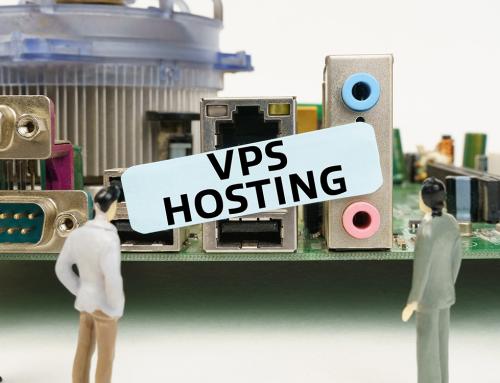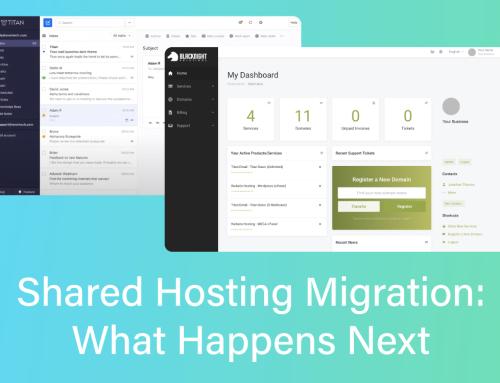This is the latest in a series of articles about dedicated server hosting on the Blacknight blog. Read more from the series here. The computer world is full of jargon and impenetrable language that can make important business decisions difficult to make. As part of our ongoing series about dedicated hosting, we thought it would be a good idea to create an easy to read dictionary that would define many of the words you would hear or deal with when thinking about, and using a dedicated server.
Data Centre
Colocation – Usually with a dedicated server, you are renting the server. With colocation, you actually own the hardware, but simply pay for it to be placed inside a data centre.
Data Transfer – The block of data that you’re allocated to transfer to/from your server in a given period of time (usually a month).
Managed/Unmanaged – A dedicated server needs to be maintained; this means keeping software licenses current and updating software when needed (for security updates). When you buy a dedicated server, usually the host will sell you a management package for an additional fee. They’ll keep your server updated, running, and monitor it for downtime. And fix it if you happen to break it.
Port Speed – The maximum amount of data that can go through the physical ethernet port at any given time. For example, Blacknight’s dedicated servers have 1Gbps ports – which translates to the ability to move data at 1000 Megabits per second (not megabytes, a different measurement)
Rack – A rack is a cabinet located in a data centre room that contains dozens of different servers.
Hardware
Dedicated Server – The root of everything related to dedicated hosting. A dedicated server is a special type of computer, sitting in a cabinet (a rack) in a data centre.
Firewall – Another type of computer that usually physically sits in front of your server and protects it from malicious attacks and unauthorised access.
RAID – Redundant Array of Independent Disks – a group of hard drives strung together for redundancy and performance.
HDD – A hard drive where your data is stored. A standard HDD is a disk-based drive that actually spins. In most cases, these are obsolete.
Headless – Servers sitting in a rack don’t have monitors, keyboards, or mice hooked up to them with desktop environments like a regular PC. You control them via SSH and the command line (see below).
SSD – A solid-state hard drive. Instead of spinning disk hard drive, it’s literally a solid block of data storage. It’s much faster (like 1000x faster) and usually lasts a lot longer because there is no spinning mechanism to wear out. SSD’s are now the standard in server configurations.
Software
Apache – Apache is web-server software, which serves content on a server over HTTP/HTTPS to an end-user’s browser. It’s a collection of software scripts that makes an HTTP accessible server run. It provides the modules needed for a website or app to be served to someone. It’s what the various protocols and programming languages communicate through. Think of the OS as the brain of the computer, the control panel is what it looks like, and Apache ties it all together.
CGI – Common Gateway Interface – it’s a program that executes scripts needed to serve websites on the most fundamental level.
CMS – Content Management System. It’s a script (usually written in PHP) that will serve a content-based website to the end-user – and provide an admin interface where you can manage said website. WordPress is the world’s most popular CMS, followed by Drupal and Joomla. You can run all of these on a standard Linux server (and run all of them if you wanted to).
Control Panel – Your operating system runs the server; the control panel is the web-based software that allows you to control what your server does. Like a desktop environment on a desktop computer, it’s the front end of your server that you interact with. The two biggest control panels are Plesk and WHM/CPanel. Each has its own benefits and feature sets, but CPanel is generally the most popular in a dedicated setup. Like your chosen OS, it comes down to personal preference. Most shared or VPS/Cloud hosting will use CPanel, so that’s probably the one most people are familiar with.
Javascript – A popular programming language, common in web applications. It’s light and easy to learn and can be implemented quickly when used.
LAMP – LAMP is an acronym for a bundle of software usually made up of Linux, Apache, MySQL, PHP, Perl, and Python. It’s the most basic things needed to make a Linux computer a server that serves websites to end-users.
NGINX – This is an alternative to Apache that is designed to serve websites on a much larger scale and is often used for high traffic websites. It’s also commonly used with load balancers. It’s much more advanced and hands-on than running an Apache webserver. They can also run side-by-side.
OS – Operating System, the software that makes your server go. There are many options – from various Linux flavours to Windows and MacOSX. Webhosts will usually let you pick from several options that they support. It really comes down to personal preference and what you need the server to do.
Perl – A popular scripting language used to run CGI scripts at the server level. It can be used to do many different things. For example. CPanel, mentioned above, is built on Perl as are other popular content management systems.
PHP – This is the most popular scripting language on the internet, and most web apps and scripts are written with it. For example, Wordpress, fundamentally, is a PHP script.
Script – A script is a piece of software that makes your server do something. Some are simple (like a to-do list app) or complicated (like a Content Management System such as WordPress).
Softaculous – At the most basic level, it’s a script library. But it plugs into hosting Control Panels like CPanel and Plesk to easily install and manage scripts like WordPress, Chevereto, phpBB, among others. There are others that do this as well, such as Installatron and Fantastico.
Domains
DNS – The Domain Name System is the backbone of the internet. It is the phone book for the internet, you give it a name, and it looks up the number (IP Address) where it’s located. The DNS for your server basically controls the domains on your server. When you point a domain at your server, and others try to access it, it routes the traffic to the right place on the server and then connects it to the wider global DNS system.
IP address – Every computer, every device, anything that communicates on the internet has an IP address, which is your numbered location on the internet. Most consumers have dynamic IP addresses that change regularly. Your dedicated server will have a dedicated IP that will never change. It’s what you give to the DNS system to point your domains at your server. Nothing works without an IP address. There are two types of IP addresses – public and private. A public IP is one that is uniquely assigned to a machine that is accessible to the entire internet. A private IP address is one that is assigned on the home/office/network level that is only accessible to other devices/users on that network.
Subdomain – A part of a top-level domain (see below). It will usually come before a top-level domain – for example: https://shop.website.com. Commonly used to show the relationship of a website or script as being under the main top-level domain.
Top-Level Domain – The main top-level domain used on a webserver. Example: website.com.
Functions
Backup – File storage, usually located off-server that contains a complete backup of your webserver. Every dedicated server needs a backup strategy to protect your data in case of a crash or corruption. Most servers will come tools to set up automated backups. If you have managed dedicated hosting, they can usually set up backups for you as well.
Caching – When a webpage is served using a content management system like WordPress, it pulls the data from the database as the page loads. When a page gets a burst of traffic, this can burden the server and make the website perform slowly. Caching allows pages to be stored as hard-coded pages so that when they’re served to the end-user, they use far fewer server resources.
Command Line – Since your server is a computer in a cabinet, it doesn’t have a monitor. The command line, accessed via SSH on a Linux-based server, is the way you can tell the server to do things. This is computing at its most advanced, and often where you can easily break things, which is why web hosts will install a control panel like CPanel so you can graphically interact with your server (and only access the command line when necessary).
CRON – Cron is a time-based job scheduler in Linux and other Unix based computer operating systems. Basically, it’s a script that runs on a regular interval and does something. Most CRON tasks are automated by whatever scripts you’re running, but occasionally you have to set one up yourself (this is not easy to do if you don’t know what you’re doing).
Database/MySQL/MariaDB – A core function of most PHP scripts is that they store their actual data within a database, where the information is pulled whenever the request is served to the end-user. The most popular and common database software is MySQL and is often run alongside Apache in an HTTP server setup. MariaDB is the forked successor to MySQL and is becoming increasingly popular.
FTP/SFTP – On the most basic level, FTP is file transfer protocol. It allows you to upload and download files from a server. FTP is not very secure, so it’s largely replaced by SFTP and FTPS, which are more secure versions that require authentication keys.
HTTP/HTTPS – Hypertext Transfer Protocol is the fundamental building block that makes the internet work. It facilitates the hosting and viewing of text, images, and video on a website and to the end-user. HTTPS is the secure version that uses an SSL to encrypt the connection with the end-user (see below).
Load Balancing – The principle of distributing server functions across several servers, and sometimes in several different locations, to more efficiently serve websites or apps. This allows a production environment to better handle traffic spikes or high amounts of resource requests. For example, some websites will separate content (images, video, etc.) from the actual database and have them on separate servers.
SSH – Secure Shell, it’s a way to securely communicate with your server at the command line level but also via SFTP to upload and download files.
SSL – An SSL is a piece of code physically put in your server folder that allows your website to communicate securely with end-users using encryption. It’s certainly not a bullet-proof thing. But it’s so fundamental to security on the web now, that Chrome requires SSLs by default and will warn you if you access websites without one.
SMTP/IMAP/POP – If you run your own dedicated server, you can also run your own email. These programs are usually installed when your server is set up that allow email to just work on most servers. If you use Plesk or CPanel, these are usually installed and set up for you. They run in the background. You then use software like Roundcube to access your email with a graphical inbox or use standard software like Outlook, Apple Mail, Thunderbird, etc. to access your email like you would with any other service.
Do you have any words or phrases relating to dedicated hosting that you need to be defined? Let us know in the comments below!






